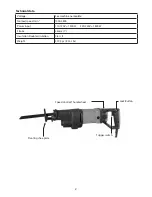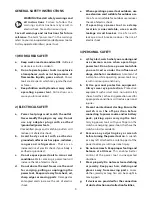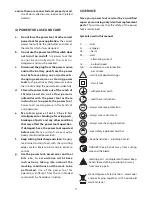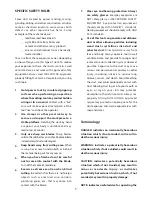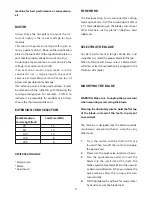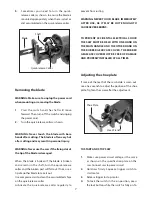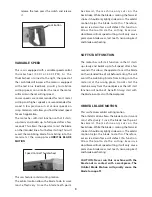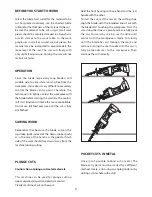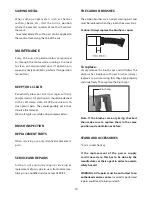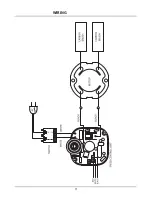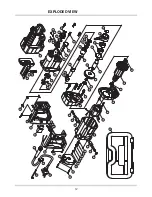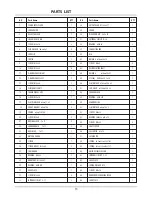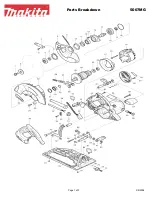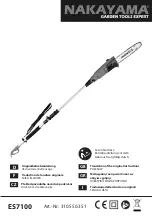
9
BEFORE YOU START TO WORK
Select the blade best suited for the material to be
cut. For greatest economy, use the shortest blade
suitable for the thickness of the material to be cut.
Be sure the material to be cut is rigid. Small work
pieces should be securely clamped in a bench vise
or with clamps to the work table. As the work
progresses in scroll or curved cut-out pieces, the
material may be readjusted to accommodate the
movement of the saw. The saw cuts freely with
only slight feed pressure. Forcing the saw will not
make it cut faster.
OPERATION
Since the blade (especially long blades) will
wobble side-to-side while running free from the
workpiece, this makes it very difficult to accurately
control the blade's entry point. Therefore, the
technique is to lightly contact the workpiece with
the blade before starting the machine. The motor's
soft start function will make this more controllable.
Do not use full feed pressure until the cut is fully
established.
SAWING WOOD
Remember that because the blade cuts on the
up-stroke (pull) instead of the down-stroke (push)
as in the case of the hand saw, the good or finish
side of the work should face down (away from the
machine) during cutting.
PLUNGE CUTS
Caution: Do not plunge cut metal materials.
This machine can be used for plunge cutting
wood, plywood, drywall and plastic materials.
Clearly mark line of cut on the work.
Hold the front housing with one hand and the rear
handle with the other.
To start the cut, rest the saw on the cutting shoe,
align the blade with the intended line of cut with
the blade NOT touching the workpiece. Start the
saw. Using the shoe as a pivot point, carefully pivot
the saw forward by raising rear handle until
contact with the workpiece is made. Cut slowly
until the blade has cut through the work and
continue raising the rear handle until the saw is
fully perpendicular to the workpiece. Then
continue the cut normally.
POCKET CUTS IN METAL
Since it isn’t possible to blind cut in metal, The
blade entry point must be started by a different
method. Create a slot using an angle grinder or by
drilling a starter hole with a drill.


